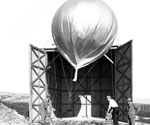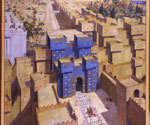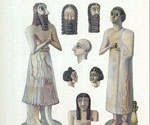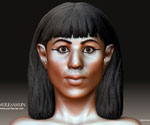Picturing the Past:Imaging and Imagining the Ancient Middle East
February 7 - September 2, 2012
Members' Preview, Monday February 6, 2012
Download the Show Catalog in Adode Portable Document Format (pdf)
"Symposium: Picturing The Past, March 10, 2012
Oriental Institute Breasted Hall, at 1:00 pm
Program for Symposium: Picturing The Past, March 10, 2012 in Adobe Portable Document Format (pdf)



Picturing the Past presents paintings, architectural reconstructions, facsimiles, casts, models, photographs, and computer-aided reconstructions that show how the architecture, sites, and artifacts of the ancient Middle East have been documented. The show also examines how the publication of those images have shaped our perception of the ancient world, and how some of the more "imaginary" reconstructions have obscured our real understanding of the past. The exhibit also shows how features of the ancient Middle East have been presented in different ways for different audiences, in some cases transforming a highly academic image into a widely recognized icon of the past.
Among the topics covered are the Oriental Institute's contributions to the documentation of Egyptian monuments through the development of an epigraphic method. James Henry Breasted's notebooks of careful hand copies of hieroglyphic inscriptions and his own camera are shown alongside archival photos of the 1905 expedition to Nubia during which the epigraphic process was invented. The work of the current Epigraphic Survey is shown by a sequence of photos and collation sheets that illustrate the many steps that culminate in the final publication.
The exhibit made up of 45 works, many of which demonstrate how archaeologists can ingeniously combine different sources to reconstruct architecture and artifacts. Examples include an elaborately decorated doorway from Medinet Habu, Egypt, with small fragments of the tile work from which the decoration was restored, a watercolor of a vessel from Rayy, Iran, with a single one of its component sherds, and computer reconstructions of buildings from Chogha Mish, Iran, that are based on the foundations recovered by archaeologists in conjunction with seal impressions that show the upper stories of buildings at the site.
The development of photography as an essential tool in documenting the past is illustrated by different types of techniques and equipment. The role and development of aerial photography is shown by early experiments with balloon-mounted cameras at Megiddo and by later developments, such as the adoption of formerly classified military spy satellite photography (CORONA) for archaeological work. A token ball from Chogha Mish is shown alongside images from an industrial CT scanner, showing how things that are invisible to the human eye can now be seen and documented using non-destructive technology.


The exhibit also explores the role that images of the ancient Middle East have had in stimulating public and academic interest in the region. Examples of stereo-opticon cards, a model of a ziggurat, a replica of the bust of Queen Nefertiti, and a model of the "Stables of Solomon" from Megiddo in today's Israel, all show how images, whether accurate or not, have become icons of the ancient world. The exhibit comments on the scientific basis for these and other images, and how embellishments on the part of the artist have, in some cases, created a false reality.
Also included in the exhibit are a series of facsimiles of Egyptian tomb and temple paintings from Thebes, Abydos, and Saqqara showing how different techniques were used to make copies, and how their presentation was, in part, a reflection of their intended audience. More impressionistic renderings of the past are represented by a Romantic scene of Medinet Habu by David Roberts, and huge painting of Persepolis by noted American artist Joseph Lindon Smith. Virtual reconstructions of monuments are represented by fly-throughs and static and interactive ("virtual heritage") reconstructions that are presented on a flat screen monitor and on a kiosk. A replica of a stereo-opticon reader will allow visitors to view images of the ancient Middle East just as did an armchair traveler of the early twentieth century. The exhibit is curated by Emily Teeter, Jack Green, and John A. Larson.


A fully illustrated catalog of essays and descriptions and commentary on the exhibit objects accompanies the exhibit.
A symposium "Picturing the Past" will be presented at the Oriental Institute on Saturday, March 10, 2012, from 1:00 to 5:00 pm.

